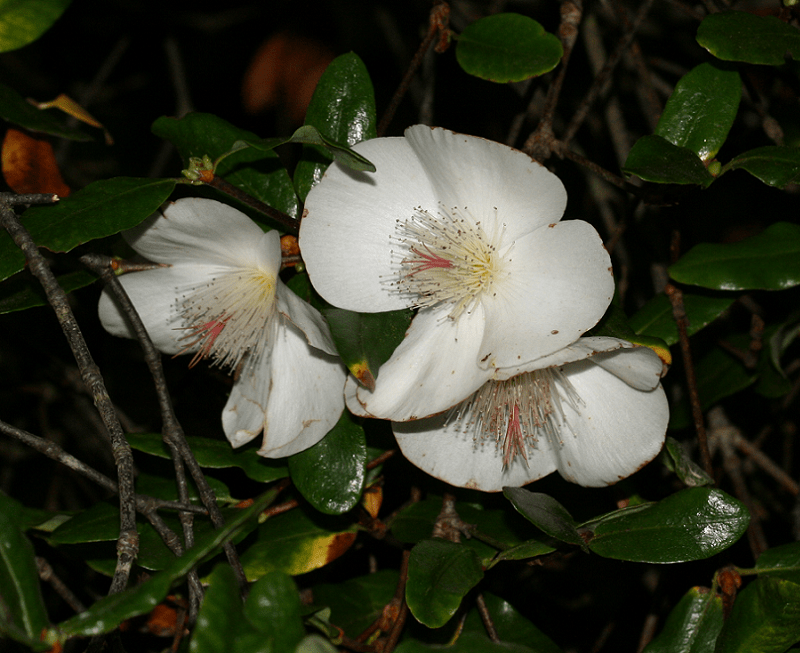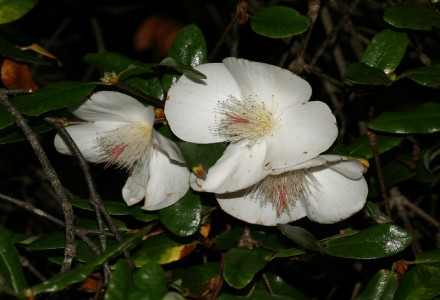
Eucryphia Facts
- Perhaps most notably, the title Eucryphia serves as the name of a small yet lovely genus of comparatively large shrubs and small trees. In addition to this fact, the shrub technically forms part of what scientists call the Antarctic flora group. To the undoubted surprise of many, this classification occurs due to the ancient origins of the impressive group.
- The story of its origins, however, began an extremely long time ago. That’s due to the fact that, along with other species, the Eucryphia evolved millions of years ago. Furthermore, this evolution took place on the supercontinent known as Gondwana. This was possible because the climate in the region of Antarctica during that era was much warmer than today.
- In addition, subsequent continental drift, combined with the effects of climate change brought about a fortunate circumstance. That’s because that action brought the remarkable Eucryphia to an environment remarkably similar to that in which it evolved. This eliminated the need for any significant evolutionary adaptations.
Related Articles
Christmas Cheer Wax Currant Nevin’s Barberry
Eucryphia Physical Description
Since the term Eucryphia serves as the collective common name for a total of seven different species, physical differences naturally occur. In addition, several recognized hybrids also exist. Nevertheless, the members of the group all share many basic characteristics. For one, while the majority of the species evolved as evergreen in nature, one of the species is deciduous.
Firstly, the six varieties that develop as shrubs remain of moderate size, compared to other shrubs. That’s because these attain much the same size, rarely reaching heights of more than 6 ft (1.9 m). Secondly, the one deciduous species reaches significantly greater heights. In point of fact, this particular variety sometimes grows into a tree measuring as much as 70 ft (21.3 m) tall.
However, the blooms of all species remain quite small, ranging in diameter from 1.2-2.4 in (3-6 cm). Furthermore, in color, these typically display a creamy white and have a strong scent. Also, the fruit of this plant consists of a tiny woody capsule, measuring roughly 0.4 in (1 cm) in diameter. Finally, the leaves of the Eucryphia grow slim and long, and typically present a dark green in color.
- Kingdom: Plantae
- Phylum: Angiosperm
- Class: Eudicots
- Order: Oxalidales
- Family: Cunoniaceae
- Genus: Eucryphia
Photographer: John Tann
CCL: https://bit.ly/1ryPA8o
Eucryphia Distribution, Habitat, and Ecology
First of all, all currently known varieties of Eucryphia remain endemic to two widely separated sections of the world. That holds true due to the surprising fact that all of them appear in either the more temperate sections of South America or the eastern coastal regions of the continent of Australia.
To begin with, five of the recognized species of this remarkable genus evolved as native to the continent of Australia. Meanwhile, the other two evolved as endemic to the continent of South America. The reason for such a great separation between the two groups presently remains something of a mystery.
Just as with physical characteristics, since the term Eucryphia applies to different species, habitats understandably differ. In fact, these vary somewhat significantly between the various species. Some inhabit high altitude regions of the Andes Mountains, while others appear along rivers and in areas of swamp.
Sadly, however, all seven members of the fascinating genus share another, less desirable trait. That’s the fact every plant in the group now finds itself in danger. The IUCN currently lists all seven forms of Eucryphia as Near Threatened. In addition to the danger posed by climate change, the species also all face the danger of habitat loss.
Species Sharing Its Range
Jabuticaba Tree Kangaroo Thorny Dragon
Check out our other articles on 5 Incredible South American Islands, Bee Hummingbird, Multnomah Falls, Saint Francis’ Satyr Butterfly, Long-Finned Pilot Whale, Hummingbird Fuchsia

